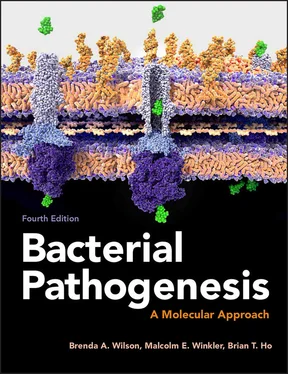Figure 3-18. Sources of hypotension, disseminated intravascular coagulation (DIC), and internal hemorrhages seen in cases of septic shock.
Activation of complement throughout the body further increases the transmigration of phagocytes. The vasodilating action of C3a, C5a, leukotrienes, and prostaglandins contributes to leakage of fluids from blood vessels and further reduces the ability of blood vessels to maintain blood pressure. Some cytokines cause inappropriate constriction and relaxation of blood vessels, an activity that undermines the ability of the circulatory system to maintain normal blood flow and blood pressure.
Another sign that is frequently associated with septic shock is disseminated intravascular coagulation (DIC), which can be seen as blackish or reddish skin lesions (petechiae). DIC results from widespread activation of blood clotting (coagulation system) in blood capillaries throughout the body. A mediator of DIC is the release of tissue factor (TF), a glycoprotein found on the surface of many cells, such as endothelial cells, monocytes, and macrophages. TF is released into the circulation in response to proinflammatory cytokines (IL-1 and TNF-α), as well as LPS-stimulated TLR4 signaling during sepsis from Gram-negative bacteria. As clots form, blood flow to organs is impaired and ischemia ensues, leading to the tissue damage seen in DIC. On the other hand, as clotting factors are consumed during the formation of multiple clots, bleeding results in other areas where vasodilation has occurred. In addition, activation of the clotting cascade releases excess thrombin, a protease that cleaves the zymogen plasminogen to plasmin, which in turn causes fibrinolysis (the breakdown of clots) and results in hemorrhaging (bleeding), a common symptom of DIC. Hemorrhages not only contribute to hypotension but also damage vital organs.
Once septic shock enters the phase in which organs start to fail, it is extremely difficult to treat successfully. The death rate for severe septic shock is 30–50%, but DIC worsens the prognosis to 70–80%. Treatment is most likely to be effective if it is started early in the infection; however, diagnosis of septic shock in its early stages is not straightforward, as the early symptoms of shock (fever, hypotension, and tachycardia) are very nonspecific. Also, the transition from the early stages to multiple organ failure can occur with frightening rapidity. Of the hundreds of thousands of cases of septic shock that occur in the United States each year, many occur in patients hospitalized with some underlying condition other than infectious disease, which complicates the treatment options for patients.
Accordingly, a massive effort has been made to develop new techniques for treating septic shock patients more successfully, especially in cases where the disease has reached the point at which treatment with antibacterial agents is no longer sufficient to avert disaster. Early efforts to combat septic shock have centered on the administration of glucocorticoids, which down-regulate cytokine production. Physicians have long believed that administration of steroids or ibuprofen would help shock victims because these compounds dampen various aspects of the inflammatory response, but there is now general agreement that glucocorticoid treatment is not effective in treating most types of shock. Indeed, clinical trials have now shown no significant effects from either of these therapies.
More recently, attention has focused on the proinflammatory cytokines, such as TNF-α, that seem to play a central role in the pathology of shock. Antibodies or other compounds that bind and inactivate cytokines have been tested for efficacy in clinical trials. Although the outcome of early clinical trials has been disappointing, newer anti-cytokine agents now being tested appear to be more promising. Nonetheless, it is clear that this type of therapy will never be as effective as catching septic shock in its very early stages.
One impediment to early diagnosis of shock has already been mentioned: the nonspecific nature of the signs and symptoms of shock. Another impediment to early diagnosis is that so many different types of bacteria can cause septic shock. If diagnosed early enough, intensive antibiotic treatment can be effective in halting the shock process. However, until recently, no definitive microbial diagnosis could be made in about a third of patients with clinical signs of sepsis. Additionally, although bacteria are the microorganisms most frequently implicated in septic shock (approximately 80% of cases), many different species of Gram-positive and Gram-negative bacteria can cause shock. Because no single antibiotic is effective against all of these bacterial pathogens, it is important to determine the species of bacterium causing the infection. This is further complicated by the varied natures and mechanisms by which antibiotics work to perform bacterial killing, As we will further explore in chapter 15, antibiotics that result in lysis of the bacterium might cause further harm by causing release of membrane components such as the endotoxin LPS.
Fortunately, some new methods for rapid bacterial identification have been approved by the FDA and others are in late-stage development. These methods rely on highly sensitive technologies, such as mass spectroscopy and PCR-coupled high-throughput sequencing, which enable determination of protein or DNA content from samples taken directly from blood or cultured from blood for only a few hours. The protein or DNA profiles obtained are then quickly compared to library databases of hundreds of standard profiles from known bacterial pathogens. These new methods make identification of pathogens possible in less than a day, and sometimes in just a few hours, instead of the several days required by standard microbiological testing. Other research efforts are focused on determining biomarkers indicative of different causes of sepsis to guide appropriate antibiotic administration and shock treatments. We will discuss more of these methods in chapter 9.
Other Innate Defenses of the Body—Nutritional Immunity
Another innate defense that is present in blood and helps to hamper spread of the invading microbes is a group of proteins that sequester metals away from bacteria that enter the body. Transition metals, such as iron, manganese, and zinc, are essential to the survival of invading bacteria. By restricting metal availability through a group of metal-binding proteins as part of the innate defenses, the body is able to prevent the growth of invading microbes. This limitation of essential nutrient transition metals, termed nutritional immunity, is gaining recognition as a potent innate defense against pathogens.
We have already discussed the role of lactoferrin as a secreted iron-binding protein of surface defenses (milk, tears, saliva, and nasal secretions) that hampers microbial growth and colonization outside the body. Like lactoferrin, transferrin sequesters iron and prevents iron acquisition by microbes that enter the blood. Transferrin is a glycoprotein produced by the liver that circulates through blood and lymph and binds extremely tightly to the ferric form of iron (Fe3+), controlling the level of free iron available. Transferrin bound with iron is recognized by a cell surface receptor that transports the Fe3+-transferrin complex into recycling endosomes, where the iron is sequestered and removed from the transferrin, and the transferrin is then recycled to the surface, where it can scavenge more iron. In this way, the levels of iron in blood drop to an even lower level than normal, which severely limits the growth of most bacteria. Transferrin and lactoferrin, along with their receptors, are also thought to mediate cellular uptake of other divalent metal ions, such as manganese, zinc, and copper, albeit to a lesser extent.
Читать дальше












